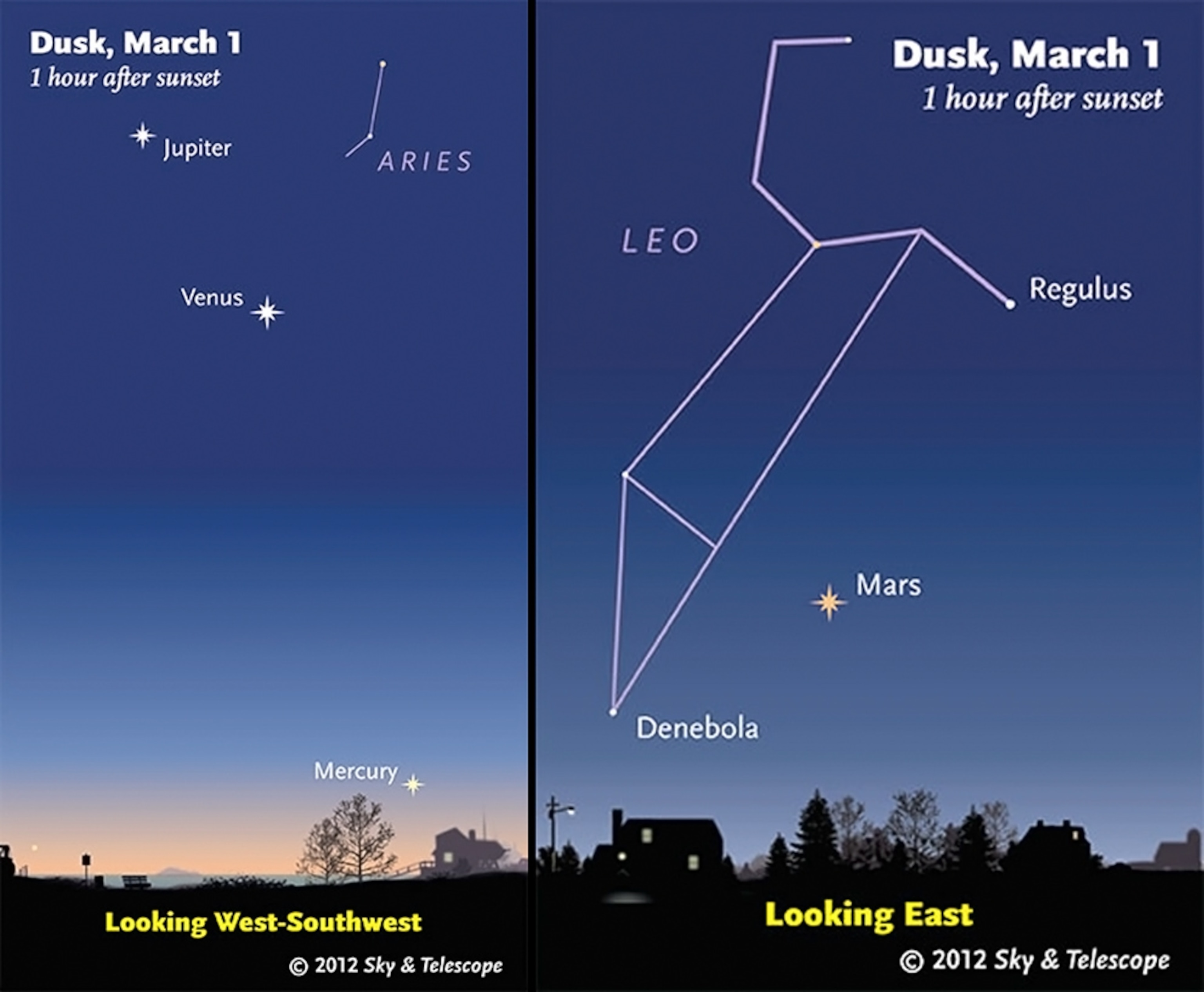
See 5 Bright Planets in Night Sky—First Time in 8 Years
Find out when and where to see naked-eye objects this week.
For the first time in almost a decade, sky-watchers this week will be able to see all five naked-eye planets over the course of one night for several nights in a row.
The classical naked-eye planets—Mercury, Venus, Mars, Jupiter, and Saturn—can be seen easily without optical aids and so have been known since ancient times.
But the quintet hasn't appeared together during a single night since 2004.
What's more, this week's parade of planets will be joined in the nighttime skies by the waxing crescent to waxing gibbous moon and the superbright stars Sirius and Canopus.
(Related: "New Comet Found; May Be Visible From Earth in 2013.")
"Although being able to see these objects simultaneously doesn't have any scientific value as such, it is a really fun opportunity to get a sense of how we fit in the universe," said Geza Gyuk, an astronomer with the Adler Planetarium in Chicago.
"It is a bit like looking at an astronomy class in a nutshell."
Best Views for Cosmic Parade
Although the moon and the seven bright objects will all be visible in one night, they won't all appear at the same time or in the same region of the sky.
The best time to catch sight of the cosmic parade will be between February 28 and March 7. This is when the more elusive planets Mercury and Mars will be at their brightest in the evening sky for 2012, and when the moon will be above the horizon for many hours before setting.
Just after local sunset, Mercury will be low in the west and rusty-colored Mars will start to rise in the east.
Catching Mercury in particular is notoriously difficult, Gyuk said, because the tiny world is the closest to the sun and so never appears very far above the nighttime horizon.
(Also see "NASA's First Pictures of Mercury Taken From Orbit.")
The best way to find Mercury with the naked eye will be to first identify the superbright planets Jupiter and Venus, which will appear in the southwest about 30 minutes after local sunset.
"Follow the line connecting Jupiter to Venus below right, and continue on until you almost reach the horizon," Gyuk said.
"Mercury will be in this vicinity and should be fairly bright in binoculars, but will be getting dimmer and harder to locate as the days of early March progress."
Saturn—which looks like a bright, yellowish star—will rise near local midnight in the east.
According to Gyuk, the best place to view the sky show will be from either a large field or the top of a hill with eastern, western, and southern views.
Full Show a Limited-Time Offer
Sirius and Canopus are the brightest stars visible any time year-round, but this week they'll be at their highest in the sky for 2012 soon after local dusk sets in.
Located just under nine light-years away, Sirius is the brightest star we can see from Earth and the lead star in the constellation Canis Major, the mythical "big dog" that shines high in the Northern Hemisphere's winter sky.
Canopus, the second brightest star in the sky, is part of the southern constellation Carina, the keel of the mythological ship the Argo. (Related: "'Light Echoes' From Monster Star's Eruption Found—A First.")
While Sirius is visible from all mid-latitude regions, Canopus—to the lower right of Sirius—can be seen only by observers in more southerly latitudes, for instance, below Los Angeles and Atlanta.
The northern limit for viewing the other six bright objects this week is around the Arctic Circle, beyond which Sirius is invisible. The southern limit is around the Equator, beyond which it becomes very difficult to spot Mercury.
"The moon, of course, is our closest cosmic neighbor and the only one we can really study as a world with the naked eye or even simple binoculars," Gyuk added. (Related: "New Scars Found on Moon, Hint at 'Recent' Tectonic Activity.")
"However these other points of light are all really bright objects in the sky too, so to get the full experience, take your time and let your eyes adapt to the darkness and enjoy."




